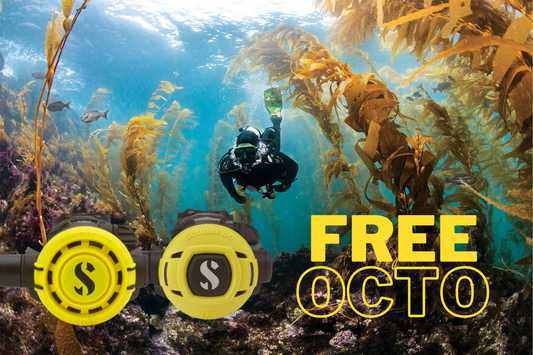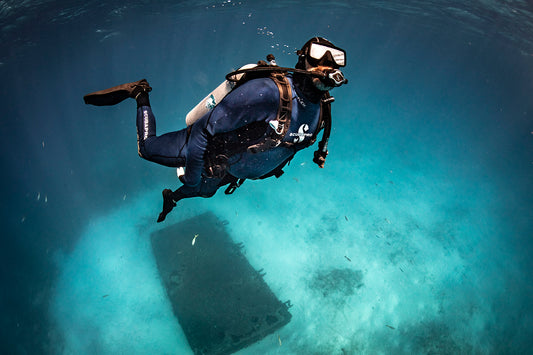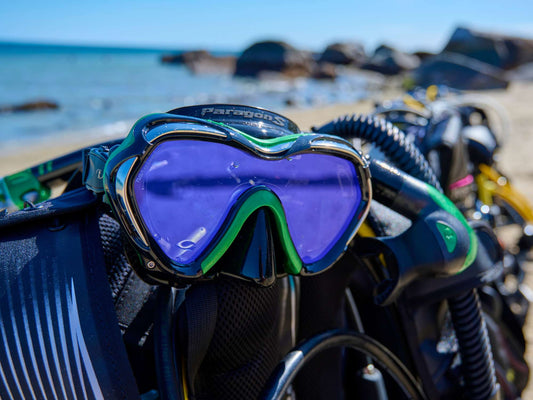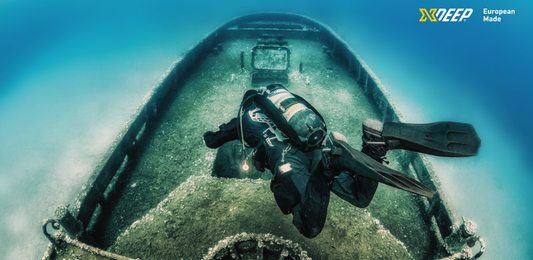
Strong currents can be a delight if you know that your boat will come to pick you up after you surface. You bowl along effortlessly and the scenery rolls on by. You can get to cover a lot of ground. You will travel three nautical miles in a three-knot current, in one hour!
It’s important to keep together with your buddy when you first submerge and stay together during the dive. Even in gin-clear water, the visibility is such that you can easily get separated. Although you may be only 30 metres apart, you’ll be unable to see each other. If one diver stops for a moment, either finning back into the current to look at something, or hanging about in a natural eddy caused by some aspect of the terrain, the other will carry on.
If you do get separated, the only thing to do it to have a good look for any other bubbles heading towards the surface. This might indicate where the other diver is. If you can see none, make your way at a safe speed to the surface. Your buddy should have done the same. It might mean that the dive is over at this point, depending on how long you had been submerged for before getting parted.
There’s not much else to know about the underwater aspect of drift diving. It’s what happens when you break the surface that counts. How will the pick-up boat driver know where you will be?
In many circumstances where you might be diving in a tidal current over flat terrain, you could come up almost anywhere. In this case it is best to us ea surface marker buoy permanently deployed. You unwind the reel according to your depth, never letting out so much line that there is a possibility of entanglement. The boat driver simply follows the buoy until you break the surface.
At other times you may be following a reef wall or some other type of topography that the boat driver is familiar with. In many parts of the world the locals know the currents like you know your own high street. In this case it might be safe to go diving without a permanent marker-buoy.
When you decide it’s time to ascend you can let the person in the boat know by deploying a surface marker buoy. When that breaks the surface he will know when and where to expect you.
Keep your marker buoy inflated until you are about to get into the boat, just in case he hasn’t seen you even though the boat may appear to be approaching.
The ocean is a very big place and you will never feel that more than when you surface and there is no boat near. A surface-marker buoy may not be so easily seen from a great distance so in parts of the world where dive-boats have to pick up many divers who might surface in separate groups, you will need a surface marker that is quite distinctly seen. A flag on an extending pole proves very effect in these circumstances.
Deploying the Buoy
Push the unrolled and deflated buoy upwards so that it floats above where you have attached it to the winder-reel line. Hold the reel in one hand with the open end of the buoy. Insert your octopus-rig into the open end and press the purge button firmly. The buoy will fill with air and hopefully will have plenty before it shoots off to the surface. Depending on how deep you are the air will expand on the way up to fill it more. Too much air will simply spill out from the bottom. The reel will become a blur as it deploys the line. Never attach a reel to you when you do this and never hold on to a buoy as it ascends.
Happy Diving - John Bantin



